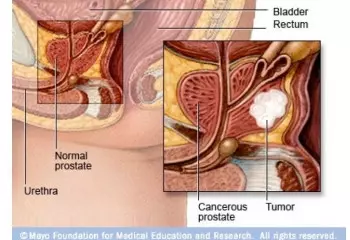A New Paradigm
For Prostate Cancer Treatment
Many physicians have a long-standing conviction that patients diagnosed with prostate cancer must have their entire gland either surgically removed or radiated. This belief stems from the idea that all prostate cancer is “multifocal”. Multifocal means that if a malignant tumor is found in one location (or only on one side of the prostate) it’s likely that tumor cells exist throughout the entire gland. For most physicians this belief holds true even if only a small tumor is found during a patient’s prostate biopsy.
While this was good medicine before the introduction of the PSA blood test, it may not be as relevant for all men today. PSA screening has changed everything. PSA has created a new standard for prostate cancer by changing the point in time that we find prostate cancer (Grossfeld 2001). While researchers continue to look for more accurate serum markers, PSA testing has undoubtedly saved thousands of lives through early prostate cancer detection.
In cases where multiple tumors are found they usually turn out to be of low-risk level that might not threaten a patient’s life (Harvard Medical School 2011). Although some prostate maligancies are multifocal and some tumors are very dangerous, the question arises whether treating the entire prostate gland is necessary for every man. If we establish, with a high degree of confidence, that a patient is a candidate for a focal treatment, then it is possible to develop treatment tailored to that person’s disease.
I specialize in approaching prostate tumors in a way that determines if a patient is a candidate for whole gland treatment, or for targeted treatment. The goal of a targeted treatment is to destroy only a patient’s known tumor while sparing the remaining healthy tissue. This technique avoids collateral damage to sensitive structures that can affect a man’s quality of life.
The idea of targeted treatment is not new in medicine. Breast surgeons have several options besides removing the entire breast to treat breast tumors. Instead, for qualified patients a lumpectomy is used to remove only the know tumors. It is unfortunate that the idea of a similar targeted treatment for prostate tumors has lagged behind the breast lumpectomy by almost 30 years.
The Science Behind Targeted Prostate Treatment

The above illustration shows a unifocal tumor, located in only one location.

